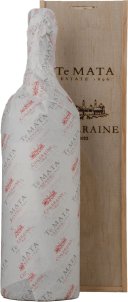Woodlands Cabernet Sauvignon
Our 2010 Cabernet Sauvignon has an intense crimson colour. The nose reveals aromas of mixed spices, dark fruits, and toasty French oak. The palate is deep and powerful; showing a ripe spectrum of red to dark fruits combined with star anise, clove, and allspice. The finish is incredibly long, with firm but fine tannins. We consider our 2010 vintage to be the most complete and complex Cabernet Sauvignon produced at Woodlands.
Chateau Lafon Rochet
Chateau Duhart-Milon Moulin De Duhart
Château Duhart-Milon’s second wine is selected on the same basis as the “Grand Vin”. In general, the grapes are from the younger plots in the vineyard. Moulin de Duhart has several characteristics similar to the grand vin, but with less potential for ageing as its barrel ageing period is shorter. It should be consumed younger than its more robust counterpart. The origin of the name comes from the former presence of a windmill on the Carruades plateau, next to the Duhart-Milon vineyard.
HAUT BAILLY II SECOND WINE OF CHATEAU HAUT-BAILLY, PESSAC-LEOGNAN
"Haut Bailly II is the second wine of Château Haut-Bailly in the Pessac-Léognan appellation. As the younger sibling of the renowned Château Haut-Bailly, Haut Bailly II encapsulates the estate's commitment to quality and tradition. Situated in the revered Pessac-Léognan terroir, the vineyards are blessed with gravelly soils and an ideal climate, making it conducive to cultivating predominantly Cabernet Sauvignon, complemented by Merlot and Cabernet Franc. The production of Haut Bailly II mirrors the meticulous attention to detail found in Château Haut-Bailly. However, it is crafted to be approachable and enjoyable at a younger age while still showcasing the elegance and characteristics of its parent estate. The resulting wine exudes flavours of red and black fruits, refined tannins, and a well-balanced structure. Haut Bailly II offers enthusiasts an opportunity to experience a taste of Château Haut-Bailly's legacy, delivering a true essence of the Pessac-Léognan appellation in every glass."
CHATEAU CORBIN ST EMILION
CLOS HAUT PEYRAGUEY SAUTERNES
Few places seem to posses the divinely ordained right to produce Bordeaux’s other iconic export, Sauternes, quite like Clos Haut-Peyaguey. Across 12 hectares of plateau-topping Premier Cru Classé vineyard, Semillon (and a smidge of Sauvignon) grapes patiently wait out summer for the noble rot to set in. We’re talking about botrytis, of course. Once it does, the sweetest grapes are handpicked for vinification before being sent for a French oak siesta. The result is one of the world’s most revered sweet white wines. Unctuous and syrypy; floral and fruity; jammy and spicy: trés magnifique!
CHATEAU LAFON ROCHET ST ESTEPHE
Château Duhart-Milon is a fourth growth (Quatrième Cru Classé) estate in the Pauillac appellation of Bordeaux. Part of the Domaines Barons de Rothschild, the wine is made by the same winemaking team as Château Lafite. A blend of Cabernet Sauvignon with a substantial component of Merlot, the Grand Vin is matured for 18 months in approximately 50% new French oak barriques. Château Duhart-Milon is typically a sturdy solid Pauillac with firm structure and earthy savoury richness.
LA DAME DE MONTROSE Second Wine of Chateau Montrose
La Dame de Montrose, first vintage 1983, is the highly-regarded second wine of Chateau Montrose, the St. Estephe deuxième cru (second growth). Montrose has a little more than 90ha of vines, the entire site overlooking the Gironde. The vineyard is 60% Cabernet Sauvignon, 32% Merlot, 6% Cabernet Franc and 2% Petit Verdot. Around 50% (or less) of the crop goes to make the grand vin and around 30% (or more) goes into La Dame de Montrose. (The rest is used elsewhere or sold in bulk.) In good years La Dame de Montrose is considered a bargain, in the best years it stands alone as a great wine. The Dame de Montrose herself is the late Yvonne Charmolüe, who ran the estate from 1944 to 1960.
LA CHAPELLE DE LA MISSION HAUT-BRION Second Wine of Chateau La Mission Haut-Brion
This is the second wine of La Mission Haut-Brion. About 4000 cases are produced each year.
Te Mata Estate Coleraine Cabernet Merlot
Te Matas Hawkes Bay estate is a prestigious winery with a rich history, producing some of New Zealands most celebrated wines. If the Langtons Classification crossed the Tasman, Te Mata Coleraine would sit alongside Grange at its very pinnacle. Established, esteemed, outstanding vintage after vintage, the glowing adjectives come thick and fast.














